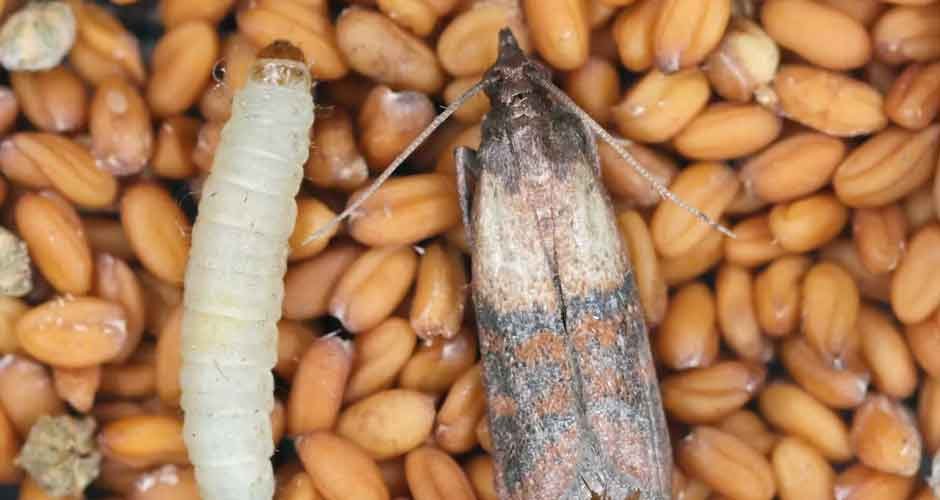Introduction
Moth infestations are a common and frustrating problem that many households encounter. These pesky insects can wreak havoc on fabrics, stored food, and overall peace of mind. It is crucial to address moth infestations promptly to prevent further damage and contamination. This article aims to provide practical strategies and tips to eliminate moths from your house effectively. Specifically, we will focus on getting rid of pantry moths, as they are a common nuisance in kitchen and food storage areas.
Understanding Moth Infestations
To effectively combat moth infestations, it is essential to understand the different types of moths commonly found in homes. Two common culprits are pantry moths and clothes moths. Pantry moths are attracted to stored food products, while clothes moths target fabrics. By identifying the specific moth species causing the infestation, you can tailor your eradication methods accordingly.
Recognizing the signs of moth infestation is crucial. Common indicators include moth sightings, webbing in food or fabric, damaged clothing or fabrics, and larvae crawling on surfaces. Understanding the behavior patterns of pantry moths is particularly important in combating infestations. These moths typically lay eggs on food items, and their larvae can contaminate an entire pantry if left unchecked.
Getting Rid of Moths: General Strategies
Regardless of the type of moth infestation, several general strategies can be employed to eliminate these pests. First and foremost, proper sanitation and cleaning practices are essential. Thoroughly clean affected areas, including closets, storage spaces, and the pantry, to remove any eggs or larvae. Vacuuming regularly, especially in hard-to-reach areas, will help eliminate hidden pests.
Utilizing effective moth repellents and traps is another valuable strategy. Moth repellents, such as cedar balls or lavender sachets, can help deter moths from infesting your belongings. Sticky traps, which use pheromones to attract and trap moths, can be placed in areas where moth activity is high.
If you prefer natural remedies, there are several options to consider. For example, placing dried bay leaves or cloves in your pantry or storage areas can act as natural moth repellents. Additionally, ensuring proper ventilation and minimizing moisture in storage areas can make them less appealing to moths.
Getting Rid of Moths from the Pantry
Pantry moths can quickly infest and contaminate stored food items. To effectively eliminate pantry moths and prevent their return, specific actions should be taken, here’s how to get rid of food moths:
Assess the extent of the infestation in your pantry. Look for signs of webbing, larvae, or moths flying around.
Empty and inspect all pantry items. Discard any food items showing signs of infestation, as they may contain moth eggs or larvae. Pay close attention to grains, cereals, nuts, and dried fruits, as these are common targets for pantry moths.
For unaffected food items, consider freezing them for at least four days or heating them in the oven at a temperature above 120°F (49°C) for 30 minutes. Both methods will kill any potential eggs or larvae.
Thoroughly clean the pantry. Remove all food items and shelving. Vacuum the entire pantry, ensuring you reach all corners, cracks, and crevices where moths or eggs may be hiding. Wipe down shelves and surfaces using a solution of vinegar or mild detergent, as these substances are effective in repelling moths.
Ensure proper food storage to prevent reinfestation. Transfer dry goods, such as grains and cereals, into airtight containers. Opt for glass or hard plastic containers, as moths cannot penetrate these materials. This step prevents moths from accessing the food and laying eggs.
Monitor the pantry regularly for any signs of moths or larvae. Keep an eye out for webbing, cocoons, or small caterpillars. Implement the “first in, first out” method by using older food items first to prevent spoilage and minimize the chances of moth infestation.
Preventive Measures to Avoid Future Infestations
Taking preventive measures is vital in ensuring a moth-free environment in the long term. Here are some practices to follow:
Inspect all food purchases carefully before bringing them into your home. Check for signs of moth infestation, such as torn packaging or webbing.
Properly seal and store food items throughout your house. Airtight containers are your best defense against pantry moths and other pests. Ensure containers are clean and dry before use.
Regularly clean and maintain the pantry area. Vacuum and wipe down shelves periodically to remove any potential food particles or residues that may attract moths.
Utilize moth repellents and traps as preventive measures. Place pheromone-based moth traps in pantry areas to catch male moths and disrupt their reproductive cycle. Additionally, herbal sachets or cedar balls can act as natural moth repellents when placed strategically in storage areas.
Monitor other areas of the house that may be susceptible to moth infestations, such as closets and storage spaces where clothing or fabrics are kept. Regularly clean and inspect these areas to prevent moth damage.
Conclusion
Moth infestations can be a significant nuisance, but with the right strategies, you can eliminate them from your house for good. By understanding the types of moths you are dealing with and recognizing the signs of infestation, you can take targeted actions to eradicate the problem. Implementing general strategies such as proper sanitation, cleaning, and the use of repellents and traps is crucial. For pantry moths specifically, emptying, inspecting, and cleaning the pantry thoroughly are key steps. By implementing preventive measures and practicing regular maintenance, you can create a moth-free environment and enjoy peace of mind in your home.






